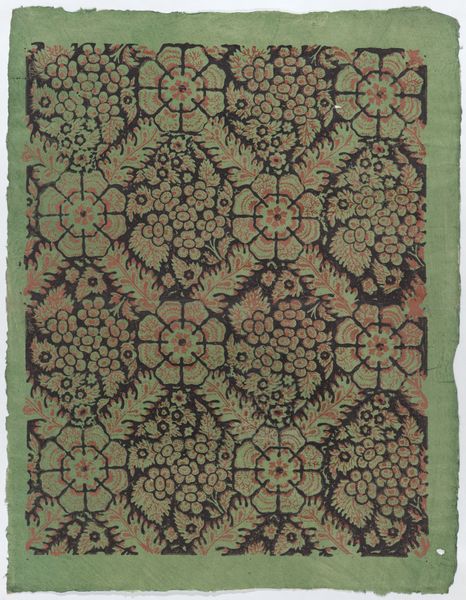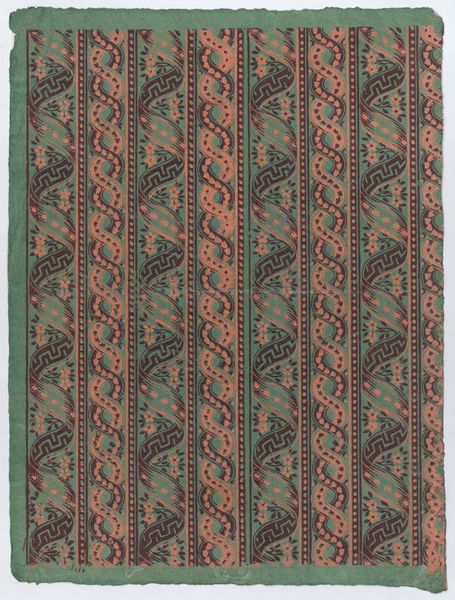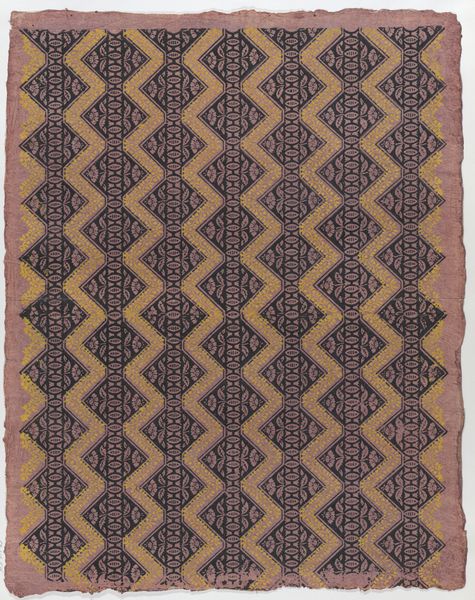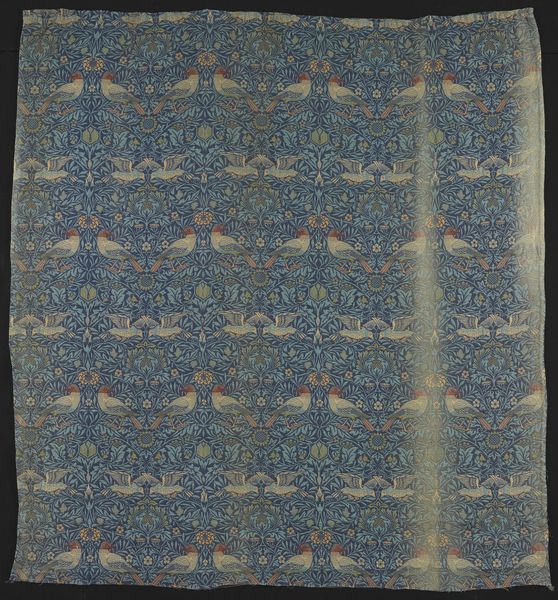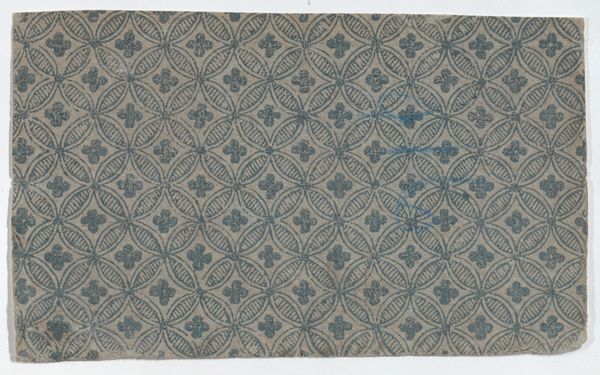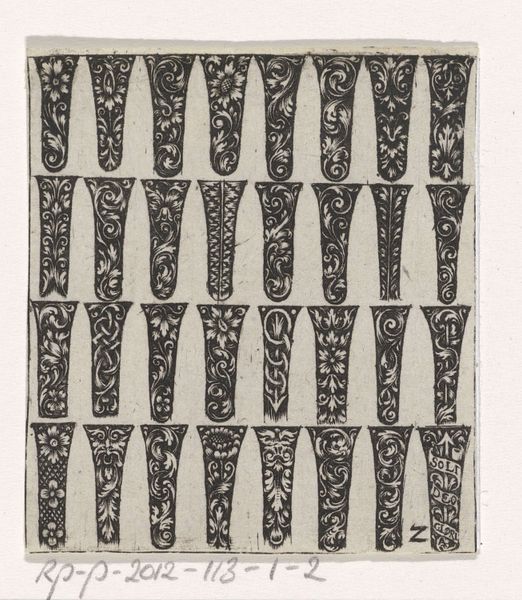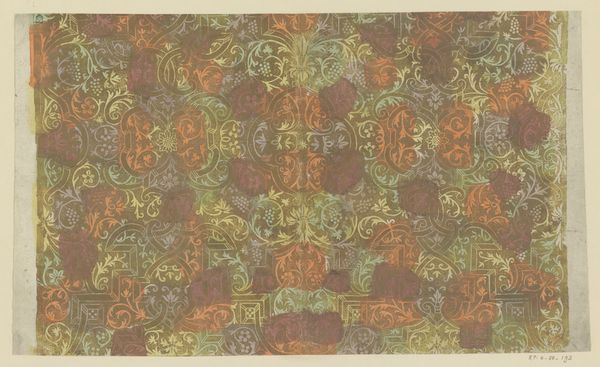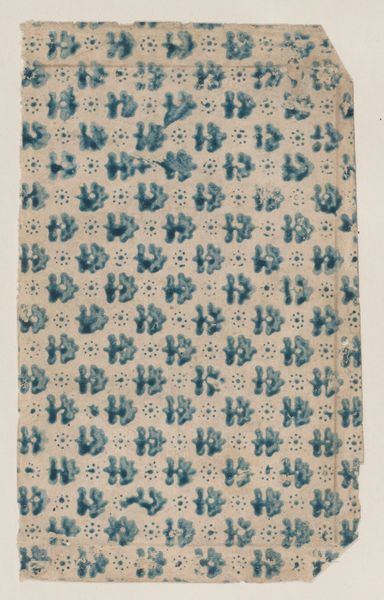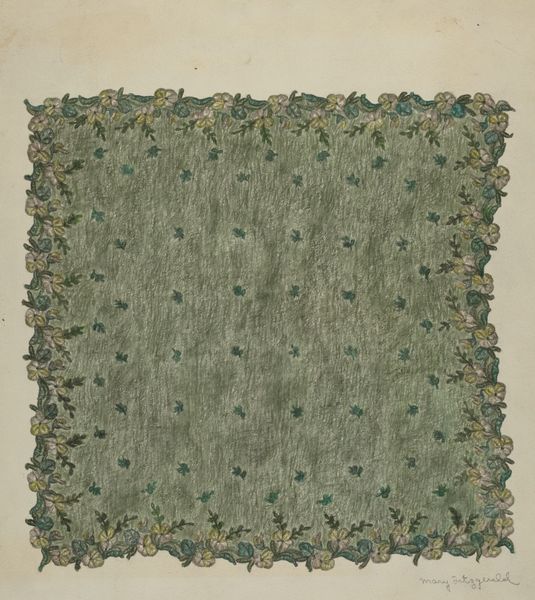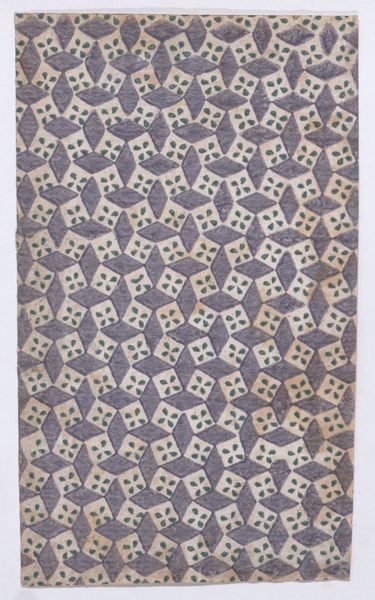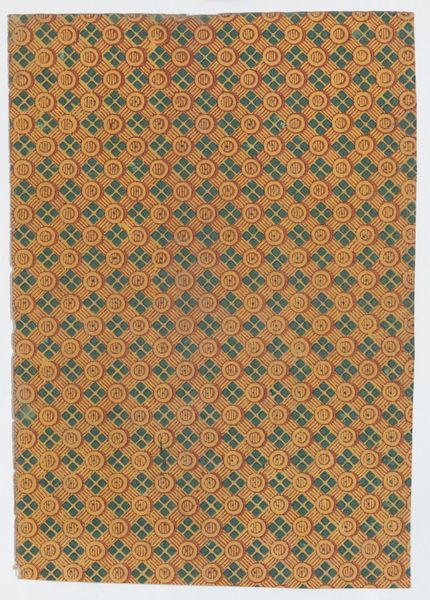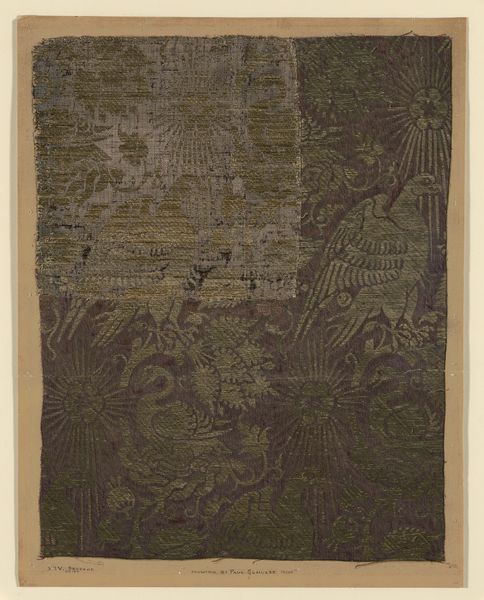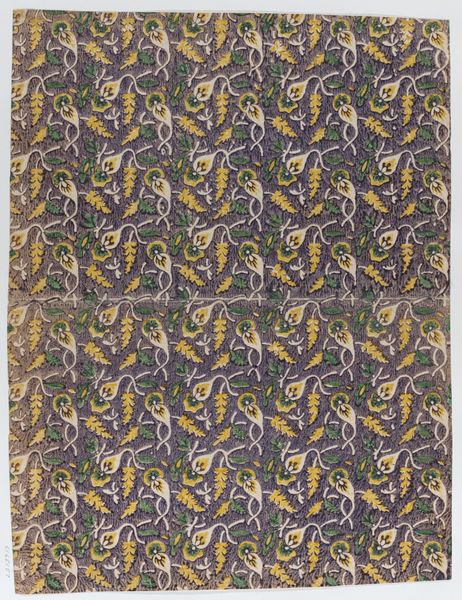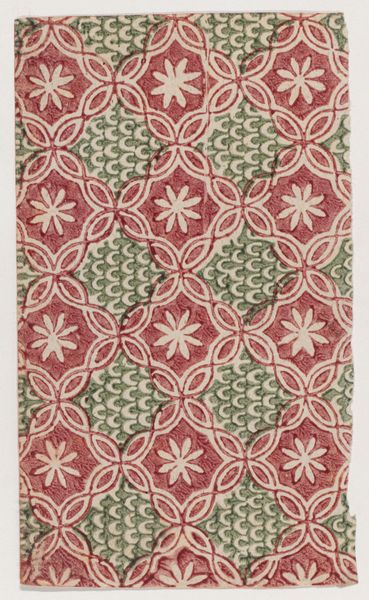
Sheet with overall pattern of leaves and flowers 1800 - 1900
0:00
0:00
drawing, print, textile, paper
#
drawing
#
organic
# print
#
pattern
#
textile
#
paper
#
organic pattern
#
pattern repetition
#
imprinted textile
Dimensions: Sheet: 14 5/16 × 18 7/8 in. (36.3 × 48 cm)
Copyright: Public Domain
Curator: Immediately, I'm struck by its repetitive nature—like a soothing wallpaper sample from a bygone era. There's a quiet calmness to the ordered botanical motifs. Editor: Today we're considering a "Sheet with overall pattern of leaves and flowers" created sometime between 1800 and 1900, and presently residing at The Met. These sorts of designs reflect intersections of artistic expression, economic structures related to textile manufacturing, and ideas about beauty—especially pertaining to the decorative arts available mostly to women in domestic settings. Curator: Right, and the image immediately sparks considerations of those settings! I see stylized flowers and curving leaves, creating a half-drop pattern. It's incredibly comforting, yet almost…oppressive in its all-over repetition. Is there some inherent commentary on the roles of women perhaps implied in its intended setting within the home? Editor: That’s perceptive! Considering it was designed as a textile pattern, potentially mass-produced, there’s also an inherent tension there, a simultaneous embracing of nature and its industrialized commodification. The botanical imagery softens what would otherwise be rigid geometry. Curator: Exactly. This also gets to the interesting ways nature is read—the layered historical connotations of "floral" versus "botanical", with floral acting to reinforce established hegemonies around "femininity." Who gets to decide what’s simply pretty versus seriously considered? This is where cultural studies proves invaluable. Editor: Absolutely. From an iconographic viewpoint, individual flowers themselves bear diverse associations. A rose represents love or secrecy, while a lily symbolizes purity or resurrection. Do you think, in viewing the repeating pattern of generalized floral shapes, we lose some of that rich individual symbolic weight? Or do we find new meaning? Curator: Potentially. What’s so powerful, in my opinion, is how art such as this can, even unconsciously, be used as forms of resistance to imposed gender norms. Editor: Well, reflecting on this piece helps me think about how symbols become embedded within larger patterns—and how the individual gives way to the collective, the specific yields to the abstract. Curator: And for me, it reiterates how crucial it is to interrogate seemingly innocuous aesthetic choices for their latent social and political implications.
Comments
No comments
Be the first to comment and join the conversation on the ultimate creative platform.
